 Going Green in the classroom, using technology to reduce waste, help collaboration, and help the environment.
Going Green in the classroom, using technology to reduce waste, help collaboration, and help the environment.
Teaching is a profession that comes with a lot of stuff. I realized this one year when I had to move from one room to another. I kept packing box after box after box.
About halfway through my packing, I realized that in most cases, I was packing up unnecessary paper byproducts of teaching. Extra handouts I never passed out. Curriculum materials from the teacher who occupied the room before me. Both great and terrible examples of student work.
Did I really need all this paper? How did I manage to generate it all in the first place? I care about the environment. I commute by bike to school, I compost my food waste and I grow my own vegetables. And so I took one look at all this paper and got a little sick to my stomach. Then I knew going green in the classroom was the next step.
Some amount of paper use is necessary in the classroom, I realize. However, I felt like there must be a solution to the over-consumption of paper taking place in my classroom. I found much of my solution in Google Apps for Education.
Handouts – Going Green in the Classroom
I used to run off additional copies of all my handouts to make sure students would all get their own copy and to have extras for students who were absent or for students who lost their original handouts. This was a great place to get started on going green in the classroom.
After completing a unit, I always had extra handouts I would file away to use the next time I taught the unit. Of course, I always forgot about these extra copies and would repeat the cycle all over again.
Now, instead of providing one handout to every single student I share the handouts with them through our private Google network and teach them how to organize these shared documents into folders. This was the first step of going green in the classroom and reducing the number of handouts I needed to print.
I also post the handouts in a folder on my Google site for students and parents. This way, students can access the handouts on their mobile devices while they do homework.
I still make copies for students without Internet access at home or to use in class, but I no longer run off additional copies, cutting my paper use significantly.
Worksheets
My students do several worksheets in my writing intervention class, where they work on specific grammar and convention skills. I had the same problem with paper waste with these worksheets as I did with handouts. I saw right away this was another way for going green in the classroom.
As with handouts, I place worksheets on my website. Students can access them for review or if they were absent. Then, instead of providing a worksheet to each student, I project the worksheet from my digital projector.
Students copy the work into their notebooks and self-correct their work. I save paper and students then have the skill practice in their notebooks for easy reference. Review the number of worksheets you offer your students and think of the ones you can put in the cloud and help going green in the classroom.
Curriculum
About half of the paper waste I threw out during my classroom move was curriculum from my predecessor. When she retired, she left her files behind for me, which I appreciated.
However, in the digital age, most of my curriculum exists electronically on my computer and I do much of my planning at home over summer and breaks. So while I appreciated the gift of materials, it was hard to use them when they were at school and I was home. Converting useful paperwork to digital versions is another great way for going green in the classroom.
But I didn’t want to waste the resources she provided. So, I spent a few hours at the scanner entering materials and then saving them to my Google Drive. Now, I had the materials I needed when I needed them and was able to recycle files that took up precious classroom space.
Educators use — and probably waste — more paper than we realize. Reducing paper use helps us go lighter on the planet and it saves school districts money. In this age of budget cuts, every penny counts. Google Apps for Education can help reduce paper use in schools and provide powerful tools for working creatively with students.
Or at the very least, I know the next time I move rooms, I won’t find myself packing up boxes of paper.
Picture from Michael Streich



